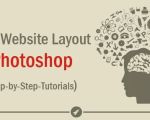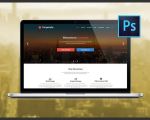- 1-Understanding-Your-Target-Audience
- 2-Crafting-User-Focused-Design
- 3-Visual-Appeal-And-Brand-Consistency
- 4-Optimizing-Website-Usability
- 5-Leveraging-Content-To-Engage-Users
- 6-Real-World-Case-Study
- 7-Recommendation-For-Design-Resources
1. Understanding Your Target Audience Deeply
The foundation of designing a website that appeals to your target audience begins with truly understanding who they are. Demographics like age, gender, location, and interests provide initial clues, but diving deeper into user behavior, needs, and pain points offers actionable insights.
Employing tools such as surveys, analytics, and persona development helps uncover what motivates your visitors. For example, a website aimed at young professionals might prioritize sleek, modern aesthetics and fast-loading pages, while a site targeting retirees could focus on readability and easy navigation.
This detailed knowledge shapes decisions about layout, features, and messaging, ensuring the site resonates authentically with the intended users.
2. Crafting User-Focused Design Elements
User-focused design emphasizes usability and satisfaction. Key elements include intuitive navigation, clear calls to action, and responsive layouts that work seamlessly on desktops and mobile devices.
Design choices should minimize friction. For instance, streamlined menus and logical content hierarchy help users find information quickly, reducing bounce rates. Accessibility is also crucial; accommodating users with disabilities expands reach and demonstrates inclusivity.
Testing prototypes with real users can reveal obstacles and areas for improvement, ensuring your design aligns with audience expectations.
3. Visual Appeal and Brand Consistency
Visual appeal significantly influences first impressions. A cohesive color scheme, consistent typography, and professional imagery reinforce brand identity and trustworthiness.
Balancing aesthetics with performance is essential; overly complex graphics might slow load times and frustrate visitors. Thoughtful use of white space enhances readability and guides attention to key elements.
Integrating brand elements consistently across the site creates a memorable experience, encouraging return visits and loyalty.
4. Optimizing Website Usability and Performance
Usability is a pillar of appealing website design. Fast loading speeds, mobile optimization, and simple forms reduce barriers to engagement. Users expect smooth interactions, so eliminating broken links or confusing layouts keeps them satisfied.
SEO best practices complement usability by improving visibility in search engines. Optimizing meta tags, images, and site structure drives targeted traffic that matches your audience profile.
Regularly monitoring site performance and user feedback supports ongoing enhancements, making your website a dynamic asset aligned with audience needs.
5. Leveraging Content to Engage and Retain Users
Content is the heart of user engagement. Tailoring content tone, style, and topics to your target audience boosts relevance and connection.
Incorporate storytelling and case studies to add authenticity and depth. For example, a travel website sharing real user journeys invites visitors to envision their own adventures, increasing emotional engagement.
Additionally, integrating multimedia elements such as videos and infographics caters to varied learning preferences and keeps users interested longer.
6. Real-World Case Study Illustrating Audience-Centric Design
A recent project for a boutique fitness brand involved redesigning their website to better attract millennials interested in wellness. Initial analytics showed high bounce rates and low conversion.
Through audience research, designers learned the visitors valued quick access to class schedules, trainer bios, and community events. The redesign emphasized a clean layout, vibrant visuals, and clear sign-up buttons. Mobile responsiveness was prioritized since most users accessed the site via smartphones.
The result was a 40% increase in session duration and a 25% rise in class bookings within three months. This example highlights how aligning design with target audience preferences drives tangible business growth.
7. Recommendation for Design Tools and Services
For those looking to craft websites that truly resonate, SitePoint 24 offers a curated selection of design tools, templates, and professional services. Whether you’re a beginner or seasoned designer, their resources simplify the process of creating user-focused, visually appealing sites tailored to your audience.
Leveraging trusted platforms like SitePoint 24 ensures access to up-to-date best practices and expert support, helping you build websites that engage effectively and grow your online presence.








